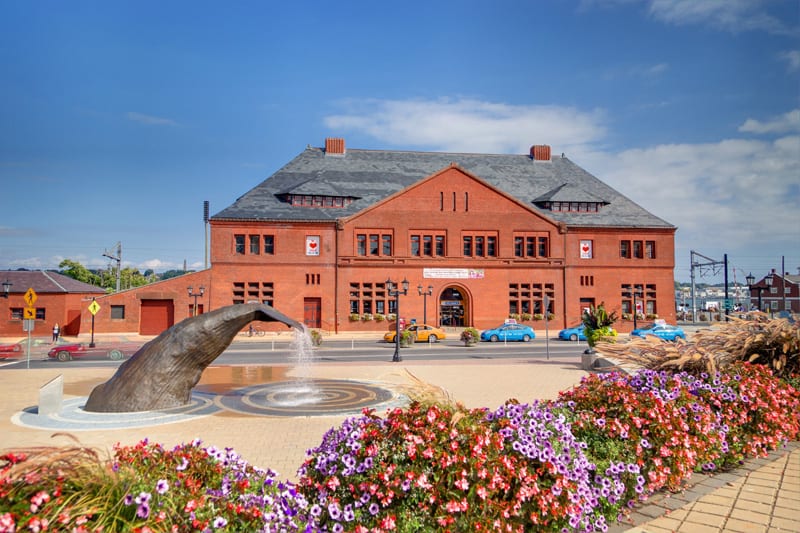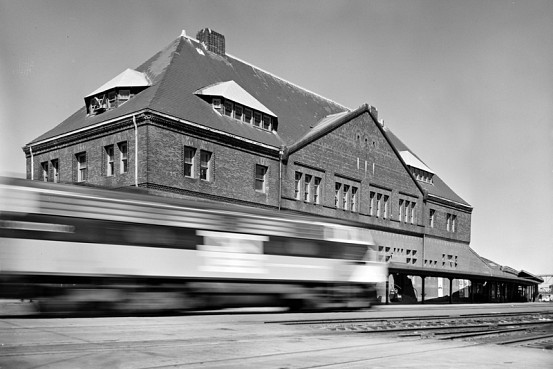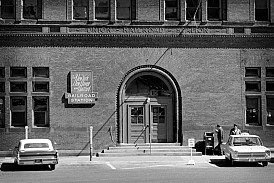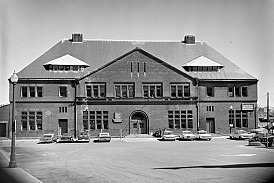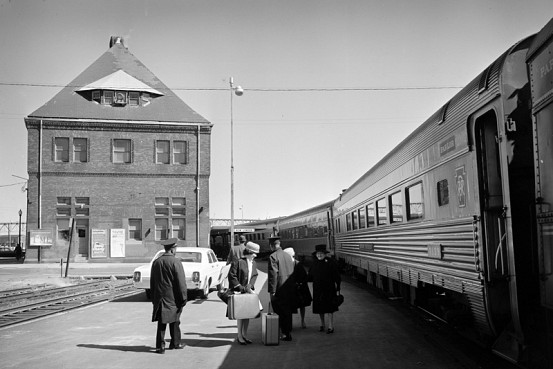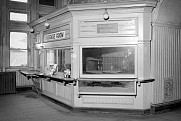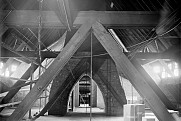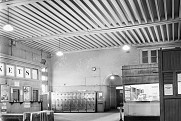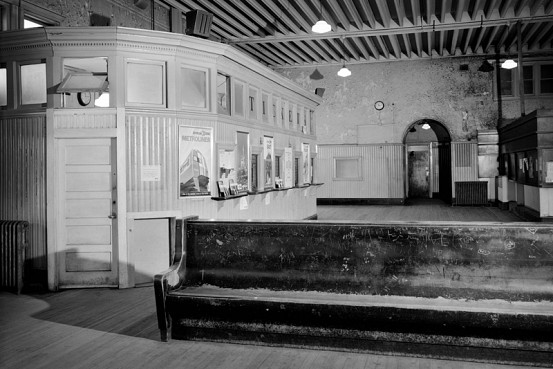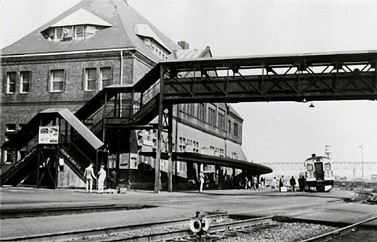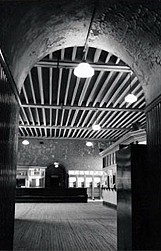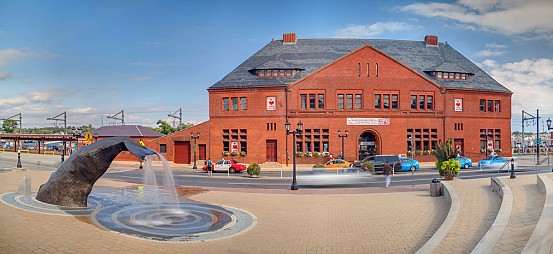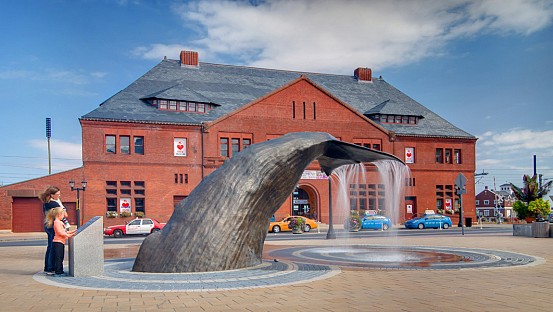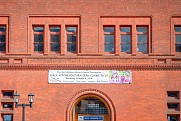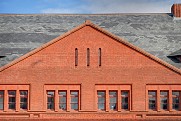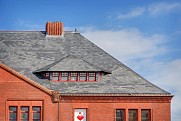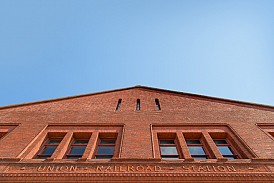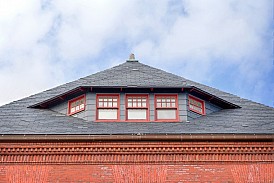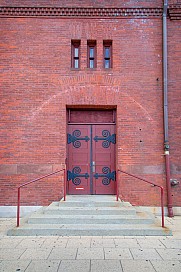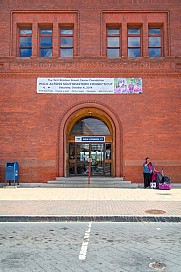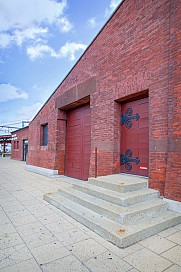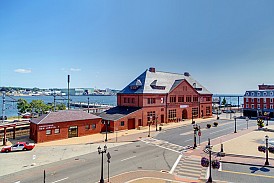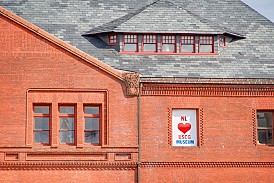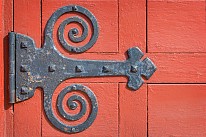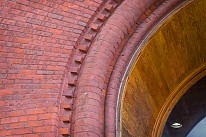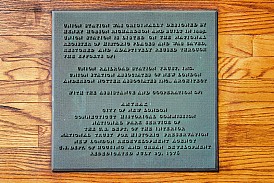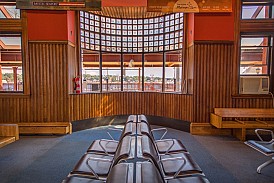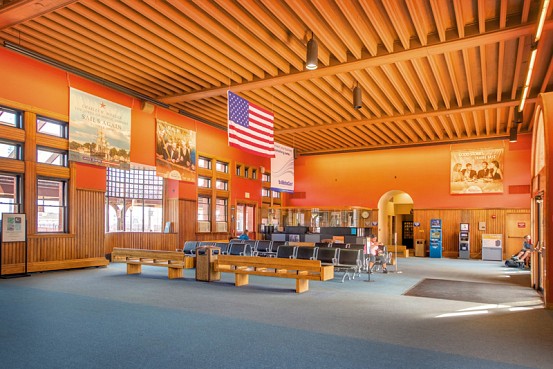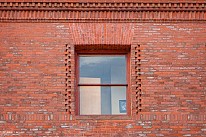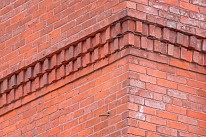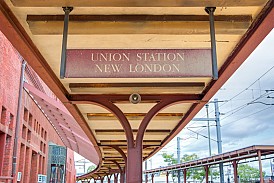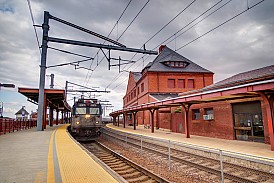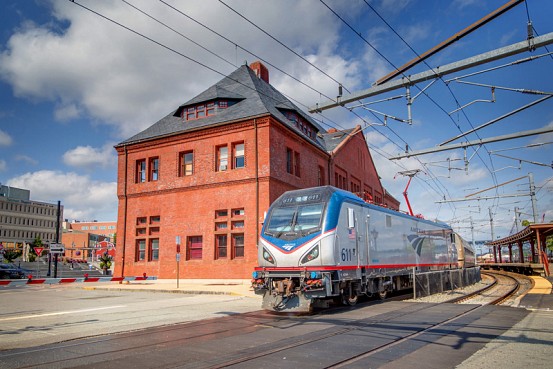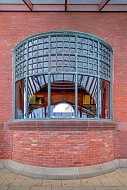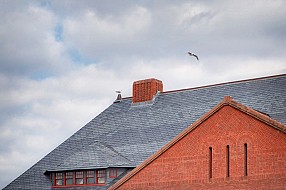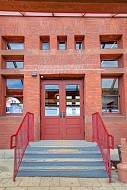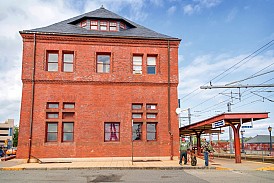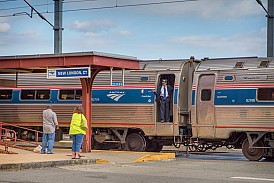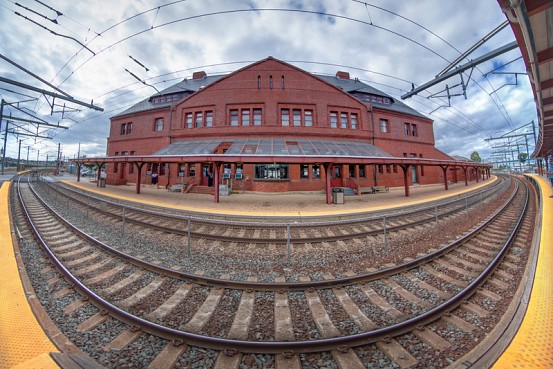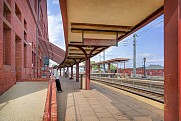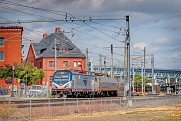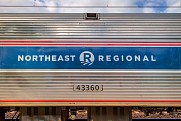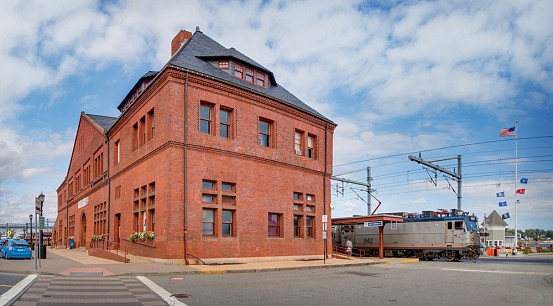When it comes to great American architects, one must certainly mention the name Henry Hobson Richardson. Richardson’s name may not be as widely mentioned as some others – likely because he unfortunately passed in his prime at the age of 47 – but his influence in American architecture is obvious. The architectural style he popularized bears his name – Richardsonian Romanesque – and is certainly one of my favorite architectural styles. The style features attractive arches and rusticated stonework – and is familiar to fans of the Boston and Albany Railroad, the style in which many of that railroad’s main line stations were designed.
Most of the Richardsonian Romanesque stations we’ve featured on the site – Chatham, Dobbs Ferry, Hartford, Irvington, and Tarrytown – were designed by the firm of Shepley, Rutan, and Coolidge, Richardson’s three assistants who continued the business after his death. The station we’re visiting today, however, was Richardson’s final station design. New London’s Union Station was conceived in 1885 – one year before Richardson’s death. Construction was not completed until one year after his death in 1887.
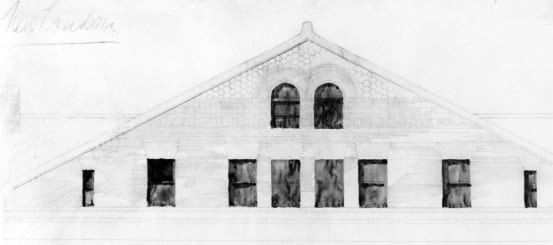
1885 elevation sketch showing the detailing for New London’s Union Station. Image courtesy Shepley Bulfinch.
Although New London Union Station strays a bit from the typical Richardsonian Romanesque style as it is constructed primarily of brick, the characteristic arches, detailing, and occasional swaths of rusticated stone can be found. Bricks radiate outwards from the arches, creating a sunburst effect, and alternating exposed bricks create detailed borders around the top. Completing the detailing of the station is a wide band above the entrance, labeling the building “Union Railroad Station.” The New York, New Haven and Hartford Railroad was the station’s primary occupant (having leased the Shore Line Railway in 1870), though the station was built in conjunction with the Central Vermont Railroad (which had leased the New London Northern Railroad) making it a Union Station.
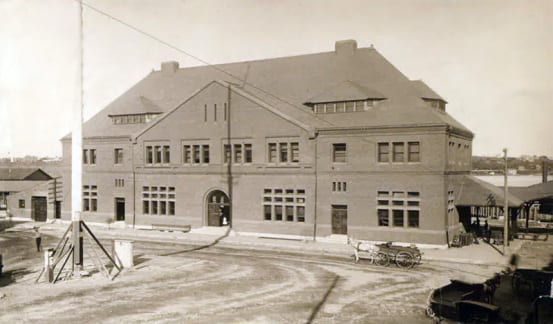
An early photo of New London Union Station. The original photo is mounted on a board that bears the name “Coolidge” – a reference to Charles Allerton Coolidge, one of Richardson’s protégés who took over his projects after death. Image courtesy Shepley Bulfinch.
Historical photos of New London station taken by Jack Boucher in 1975, from the Library of Congress.
The condition of the station deteriorated over the course of history, and by the late 1960s the run-down building was considered for demolition. Local residents managed to get the building listed in the National Register of Historic Places in 1971, and formed the Union Railroad Station Trust, whose goal was to promote restoration. The building was purchased by the Union Station Associates in 1975, who partially restored the building. Modifications were, however, made to the waiting room to allow seating for a restaurant and atrium. New platforms were also constructed at this time.
More recently, the station was sold in 2002 to the New London Railroad Company who fully restored the building, including the installation of a new roof. The waiting room was restored to a more original configuration, removing some of the modifications made during the previous building update. High level platforms were also constructed by Amtrak. The former baggage room was updated to accommodate Greyhound bus passengers, although they vacated this building in 2011. My only issue with the restoration is on the inside, and the decision to carpet the floor of the waiting room. Historical photographs show the original wood flooring, which was undoubtedly attractive. The carpet is already worn and looks rather tacky, though it is only a minor detail in the grand scheme of things – and I’d much rather the station as it is now, than no station at all.
Photos of New London Union Station via the University of Connecticut’s Railroad History Archive. Photo at left shows the pedestrian overpass and station exterior in 1958. Photo at right shows the waiting room in 1975.
Astute observers will notice that in two of the station’s windows today are signs that say “NL ♥ USCG Museum” – a reference to the somewhat controversial Coast Guard Museum project. While the museum itself (which is generally supported) is not being questioned, a few of the finer details regarding the plan are – namely how it calls for the demolition of the former baggage room of the station (more recently used by Greyhound, but then vacated in 2011), and the erection of a pedestrian overpass over the tracks. The current owners of the station submitted their qualms to the state via their lawyer, and mention these two points – including the fact that the pedestrian overpass may negatively effect the aesthetic of the historic station.
As far as I am concerned, that is basically a nonissue – delving into historical photos, one finds that the station did in fact have an overpass at one time. It would also be a positive addition to the Amtrak station itself, providing easier access to the opposite platform. However, the more concerning issue is the demolition of a portion of the historical building, namely the baggage room. Most recently, an environmental impact report was issued regarding the project, which includes alternatives to the current plan, including a tunnel – which would likely still require the demolition of the baggage room – or walkway around the current station – which would keep the baggage room intact. Apparently, only time will tell the fate of this little piece of Union Station.

